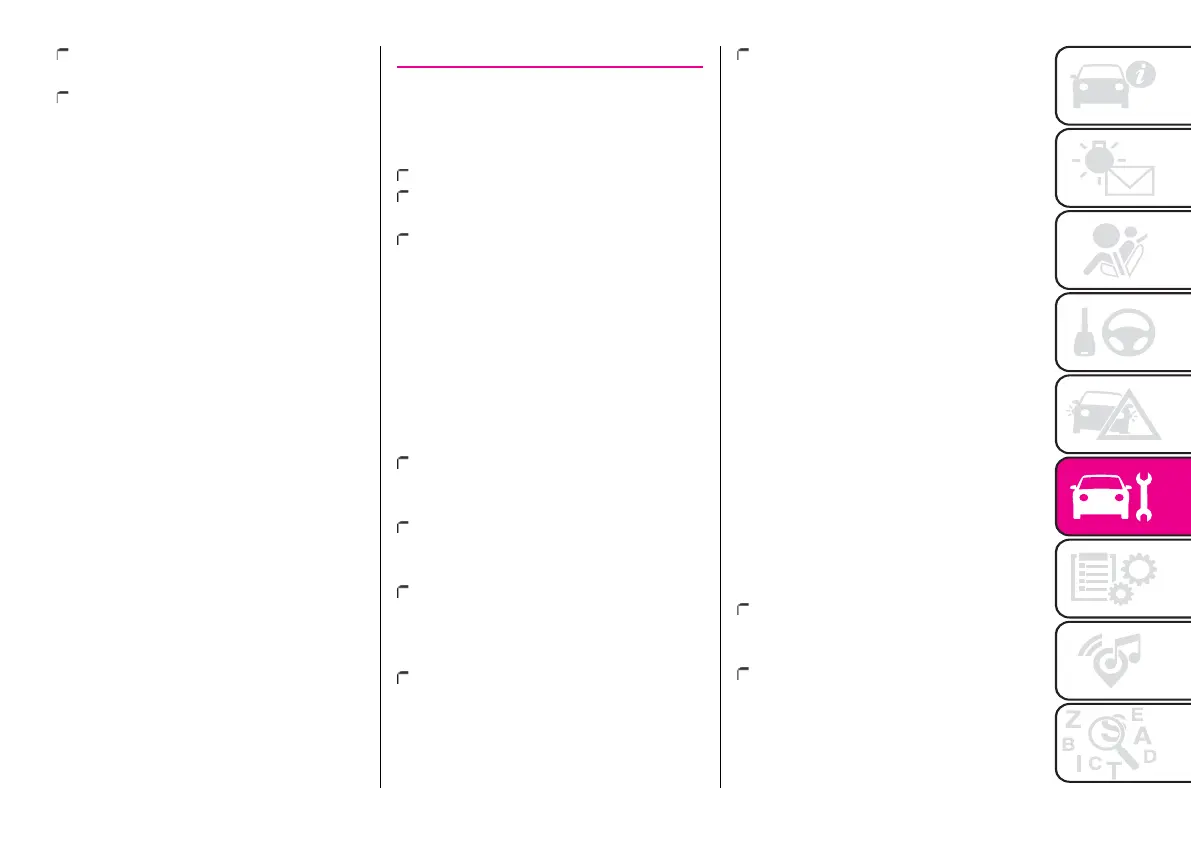141
do not drain the engine cooling
system;
any time the vehicle is left inactive
for two weeks or more, operate
the climate controlsystem with
engine idling for at least 5 minutes,
setting external air and with fan set to
maximum speed.This operation will
ensure appropriatelubrication for the
system, thus minimising the possibility
of damage to thecompressor whenthe
system is operated again.
WARNING After setting the ignition
device to STOP and having closed
the driver side door, wait at least
one minute beforedisconnecting the
electrical supply from the battery.
When reconnecting the electrical
supply to the battery, make sure that
the ignition device isin the STOP
position and the driver side door is
closed.
BODYWORK
PROTECTIONAGAINST
ATMOSPHERICAGENTS
The main causesof corrosion are the
following:
atmospheric pollution;
salty air and humidity (coastal areas,
or hot humid climates);
seasonal environmental conditions.
The abrasive action of wind-borne
atmospheric dustand sand, as well as
mud and gravel raised by other cars is
also not to be underestimated.
Abarth has used the best
manufacturing technologies on your
car to effectively protect the bodywork
against corrosion.
These include:
painting products and systems which
give the car particular resistance to
corrosion and abrasion;
use of galvanised(or pretreated)
sheet metal, with high resistance to
corrosion;
spraying the underbody, engine
compartment, wheelhouse internal
parts and other parts with highly
protective wax products;
spraying of plasticparts, with a
protective functionin the more exposed
points: underdoor,inner wing, edges,
etc.;
use of “open” boxed sections to
prevent condensation and pockets
of moisture whichcould favour the
formation of rust inside.
PRESERVINGTHE
BODYWORK
Paintwork
Paintwork does not only serve an
aesthetic purpose, but also protects
the underlying sheet metal.
You are advised totouch up abrasions
and scratches immediately to prevent
rust formation. Useonly original
paint products for touch-ups (see
“Bodywork paint identification plate” in
the “Technical Specifications” section).
Normal care for paintwork consists of
washing the car; how often depends
on the conditions and environment
where the car is used. For example, in
highly polluted areas, or if the roads are
spread with salt, itis advisable to wash
the car more frequently.
To correctly washthe car, proceed as
follows:
remove the aerialfrom the roof
to prevent damage to it if the car is
washed in an automatic system;
if high pressure jetsor cleaners are
used to wash thecar, keep a distance
of at least 40 cm from the bodywork to
avoid damage or alteration. It should be
remembered thatthe build up of water
